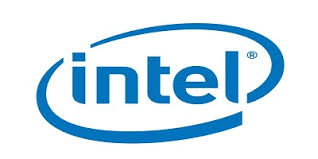Graphene-enabled Wireless Networks-on-Chip for Massive Multicore Architectures (GWNoCS)
Current trends in microprocessor architecture design are leading towards a dramatic increase of core-level parallelization, wherein a given number of independent processors or cores are interconnected. Since the main bottleneck is foreseen to migrate from computation to communication, efficient and scalable means of inter-core communication are crucial for guaranteeing steady performance improvements in many-core processors..
As the number of cores grows, it remains unclear whether initial proposals, such as the Network-on-Chip paradigm, will meet the stringent requirements of this scenario. One of the main hurdles that suggest that conventional NoCs alone may not be suitable for manycore processors is multicast communication. While the importance of multicast communication is expected to increase with the number of cores, the point-to-point nature of conventional NoCs dramatically penalizes performance in the presence of such type of traffic.
In this context, massive multicore architectures would notably benefit from possessing wireless communication capabilities at the core level. This goal is feasible by using graphene-based planar antennas, which can radiate signals at the Terahertz band while utilizing much less chip area than its metallic counterparts. The resulting Graphene-enabled Wireless Networks-on-Chip (GWNoC) would enable efficient and low-latency broadcasting, multicasting and all-to-all communication, which would impact upon the performance of virtually any future application by significantly reducing many of the issues that prevent current architectures to be applied in massively multicore environments, including data coherency, consistency, synchronization and communication problems. Aware of the relatively low capacity of GWNoC with respect to wired NoCs, we expect the former to complement the latter rather than simply substituting it.
Project Objectives
The present project aims to lay the foundations of the new research avenue opened by GWNoC by:
- Building a strong rationale behind the concept of GWNoC: to this end, a design space exploration is performed in the pathway to provide a holistic view of the on-chip networking scenario. By means of analytical models and network simulation tools, the scalability of GWNoC in terms of network performance, area and energy efficiency is evaluated and then compared with the performance of different state-of-the-art interconnect solutions. This process leads to (1) a delimitation of the cases wherein GWNoC would deliver substantial improvement with respect to other alternatives, (2) a set of guidelines for both the design of future (graphene) terahertz transceivers and of wireless protocols suited to the on-chip scenario, and (3) a preliminary study of the hybrid design space (e.g. wireless-electric, wireless-nanophotonic) towards the conception of advanced on-chip network architectures.
- Kickstarting the development of a protocol stack that will address the main communication challenges of such novel type of NoC: We will set particular focus on the design and development of physical and medium access control (MAC) methods. On the one hand, physical layer protocols need to be investigated in order to mitigate the impact of the molecular absorption at terahertz frequencies, as well as of the multipath propagation due to the reflection of the electromagnetic waves within the multiprocessor chip package. A complete channel model is required for this step. On the other hand, MAC protocols are of special importance since the GWNoC scenario potentially implies dealing with hundreds or even thousands of simultaneous multicast transmissions. In this case, we will carefully inspect the characteristics of multicast traffic in manycore processors and investigate the multiple optimization opportunities that are offered by this unique scenario (i.e. all nodes within the same transmission range, rough control over the entire system, correlation between traffic sources, etc…). Eventually, efficiently coping with the communication-intensive requirements of manycore processors will be the key for translating the potential of GWNoC into real performance improvement in next-generation architectures.
People
|
 |
|
 |
|
 |
|
 |
|
 |
Funding
| Intel Labs |
 |
Publications
-
S. Abadal, A. Mestres, R. Martínez, E. Alarcón, and A. Cabellos-Aparicio,
"Multicast On-Chip Traffic Analysis Targeting Manycore NoC Design",
in 23rd Euromicro International Conference on Parallel, Distributed and Network-based Processing (PDP),
Turku, Finland, March 2015

- S. Abadal, I. Llatser, A. Mestres, J. Solé-Pareta, Eduard Alarcón, A. Cabellos-Aparicio, "Fundamentals of Graphene-enabled Wireless On-Chip Networking (book chapter), to appear in Modeling, Methodologies and Tools for Molecular and Nano-scale Communications, Springer, 2014.
-
S. Abadal, M. Iannazzo, M. Nemirovsky, A. Cabellos-Aparicio, H. Lee, E. Alarcón,
"On the Area and Energy Scalability of Wireless Network-on-Chip: A Model-based Benchmarked Design Space Exploration"IEEE/ACM Transactions on Networking, vol. PP, no. 99, 2014

-
S. Abadal, A. Mestres, M. Iannazzo, J. Solé-Pareta, E. Alarcón, and A. Cabellos-Aparicio,
"Evaluating the Feasibility of Wireless Networks-on-Chip Enabled by Graphene",
in Proceedings of the 2014 International Workshop on Network on Chip Architectures (NoCArc),
held in conjunction with the 47th annual IEEE/ACM International Symposium on Microarchitecture (MICRO-47),
pp. 51-56, December 2014.

-
S. Abadal, Raúl Martínez, Eduard Alarcón, A. Cabellos-Aparicio,
"Scalability-Oriented Multicast Traffic Characterization,
in Proc. of the 8th IEEE/ACM International Symposium on Networks-on-Chip (NoCS), Ferrara, Italia, September 2014

- G. Piro, S. Abadal, A. Mestres, Eduard Alarcón, J. Solé-Pareta, L. A. Grieco, G. Boggia, "Initial MAC Exploration for Graphene-enabled Wireless Networks-on-Chip, in 1st ACM International Conference on Nanoscale Computing and Communication (NANOCOM), May 2014
-
S. Abadal, E. Alarcón, M. C. Lemme, M. Nemirovsky and A. Cabellos-Aparicio,
"Graphene-enabled Wireless Communication for Massive Multicore Architectures,
in IEEE Communications Magazine, vol. 51, no. 11, pp. 137-143, November 2013.

-
I. Llatser, S. Abadal, A. Mestres, A. Cabellos-Aparicio and E, Alarcón,
"Graphene-enabled Wireless Networks-on-Chip,
in 2013 First International Black Sea Conference on Communications and Networking (BlackSeaCom), pp. 69-73, July 2013.


